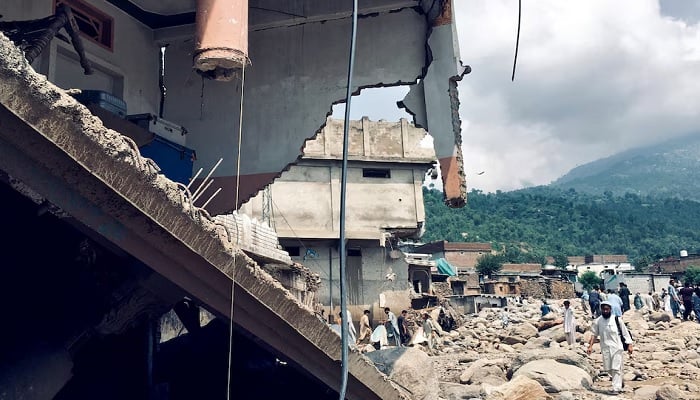SWAT, Aug 18 (Alliance News): In Swat’s Mangalore area of Khyber Pakhtunkhwa, a raging flood tore through a government primary school, destroying its walls and classrooms, but the headmaster’s quick thinking saved nearly 950 students.
Headmaster Saeed Ahmed said he noticed the water level in a nearby stream rising fast on the morning of the disaster. Without wasting time, he ordered teachers to send the children home.
Just minutes later, the flood smashed into the school, toppling its boundary wall and drowning classrooms in muddy water. Within five minutes, the entire building was submerged, but all 936 students had safely left.
“Not a single life was lost,” Ahmed told reporters, standing among the ruins. He urged the government to act quickly and rebuild so that children could return to their studies.
Meanwhile, rescuers dug through homes buried under boulders as flash floods continued to batter northern Pakistan. Nationwide, rain-related deaths — mostly in KP, Gilgit-Baltistan and Azad Jammu and Kashmir — have crossed the 300 mark.
On Saturday, hundreds gathered for mass funerals as families buried victims wrapped in blood-stained white shawls. Fallen trees and straw debris were strewn across fields, while residents struggled to clear mud from their homes.
The Pakistan Meteorological Department warned that monsoon activity is expected to intensify from Sunday, forecasting more torrential rains.
International voices also joined in solidarity. Iran offered assistance to Pakistan, while Pope Leo XIV prayed “for all those who suffer because of this calamity.”
Officials from the National Disaster Management Authority (NDMA) said this year’s monsoon is nearly 60 percent more intense than last year, with two to three more spells expected until early September.
Pakistan, among the most climate-vulnerable countries in the world, has faced repeated extreme weather events. In 2022, devastating monsoon floods submerged one-third of the country and killed nearly 1,700 people.






